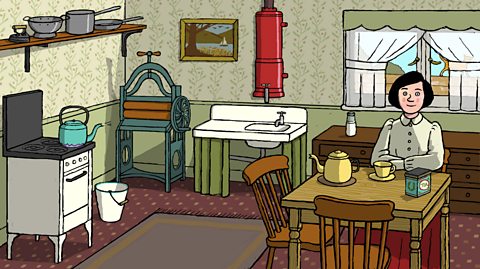Watch: New wartime inventions
New weapons and machines changed the way war was fought forever.
Watch our video to find out more about the weapons and technology used in the war.
[SNARE DRUMS]
Child: In 1914 the skies were different. They were quiet.
Planes were a very new invention, they were rare and fragile.
But when World War One started they became weapons.
Pilots could spy on enemy targets and the first bombs were dropped from the air.
Scientists, inventors and engineers had begun their own battle to create new technology that could win the war.
Planes were made stronger and quicker.
A system was invented to allow bullets to be fired through the propeller blades.
Soon the sky was full of new deadly machines.
New technology was needed at sea too.
Britain had the largest navy in the world but enemy submarines, called U-boats, were destroying ships.
So a microphone was invented that you could use underwater on a ship to hear if any U-boats were nearby.
Technology was protecting people on the ocean and on the battlefields, where poisonous gas was used for the first time, gas masks had to be created urgently to protect soldiers during an attack.
But inventions must never be discovered by the enemy.
British engineers pretended one of their designs was for a container to hold water and called it a tank.
Really the tank was a totally new weapon.
It had caterpillar tracks so it could roll across muddy battlefields and trenches, crushing anything in its path.
Enemy bullets just bounced of its armour.
Soldiers had only ever seen horses and guns.
Imagine seeing this metal monster for the first time.
Maybe the Germans thought they were having a nightmare!
New technology was changing the way wars were fought.
It was saving lives and it also helped to make the world we live in today.
Tanks, submarines and planes
The war was fought on land, sea and in the air.
New machines were being developed all the time to overcome the difficult conditions of battle.
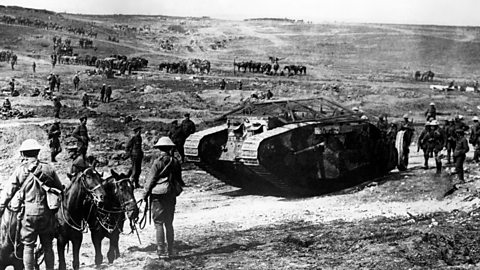
Image caption, Tanks were created for travel across battlefields
They prevented soldiers from being caught by barbed wire or gunfire. Cars were unsuitable because they could not get across the muddy ground.
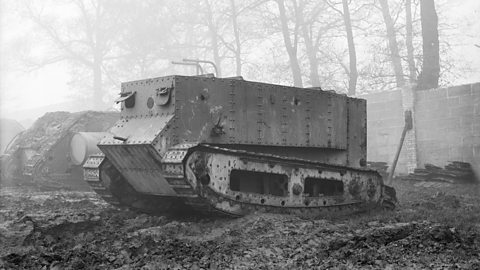
Image caption, The first-ever tank design was called 'Little Willie'
It weighed 18 tons and held a crew of two plus four gunners. It was the first completed tank in history but it never went out to war.
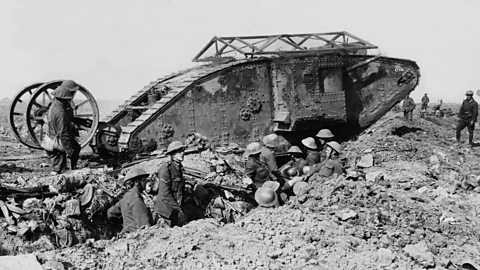
Image caption, Design continued and a better tank was sent to the front line
The British Mark I tank was used in September 1916. It held ten men and reached speeds of almost four miles per hour.
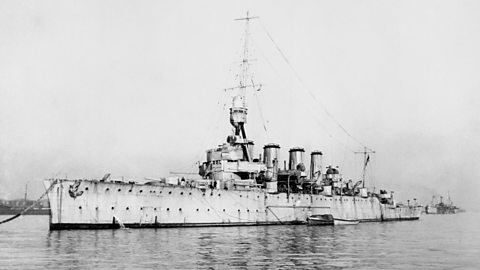
Image caption, Warships were ships with guns for fighting sea battles
Battleships were the largest warships and had very big guns. A Destroyer was a small, fast warship which fired guns and torpedoes.
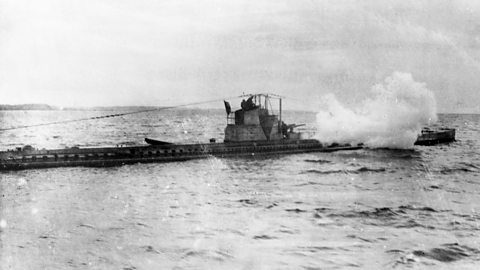
Image caption, Submarines were smaller but could destroy powerful warships
They sailed to places ordinary ships could not get to and stopped enemy ships from getting too close to Britain. The British Royal Navy had the world's largest submarine service when war broke out.
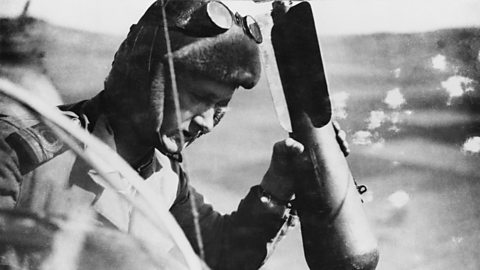
Image caption, Bigger aircraft carried bombs to drop on troops
This was originally done by either the pilot or co-pilot dropping a bomb over the side of the plane.
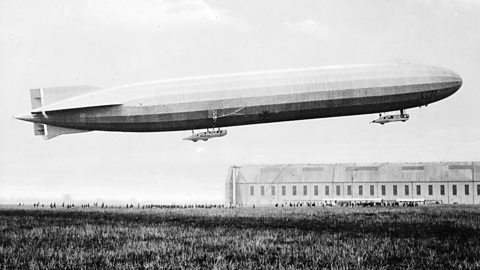
Image caption, German Zeppelin airships weighed 12 tonnes
Zeppelins carried around 2000 kilograms of bombs and carried out raids on England. However they were slow and eventually the British realised they could be shot and set on fire.

Image caption, The Gotha bomber caused more damage than the Zeppelins
The Gotha had a 24 metre wingspan, the length of two buses. It could fly for 500 miles and carried 500 kilograms of bombs to drop on Britain.
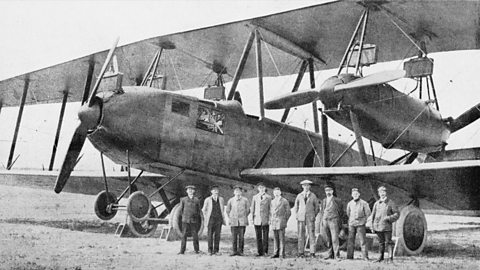
Image caption, The Giant bomber was even more powerful
It had a 42 metre wingspan, almost as wide as a football pitch. It could carry 2000 kilograms of bombs, four times as many as the Gotha. Not one Giant bomber was shot down during the war.
1 of 9
What new technology was made?
It wasn’t only weapons and machinery which saw major developments.
New methods of photography, sound recording and ways to communicate changed the war too.
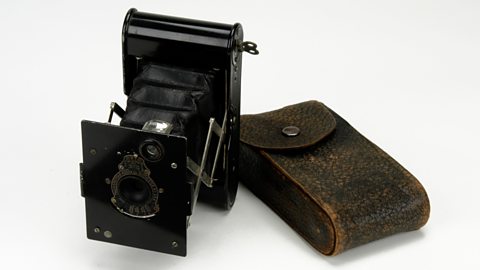
Image caption, Until 1916 taking photographs on the front line was banned
This was in case it helped the enemy to find out secrets. After 1916 official photographers took pictures and films for the army. Some new cameras were small enough for personal use.
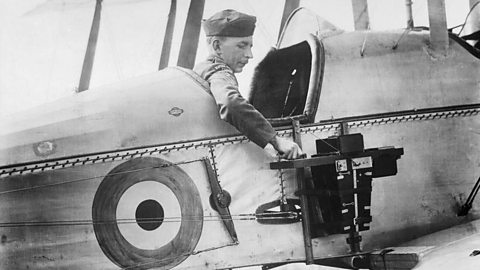
Image caption, Cameras attached to planes were used to take pictures
Photographs allowed the army to spy on the Germans and make maps of the trenches and front line. With these maps they planned where and how to attack.
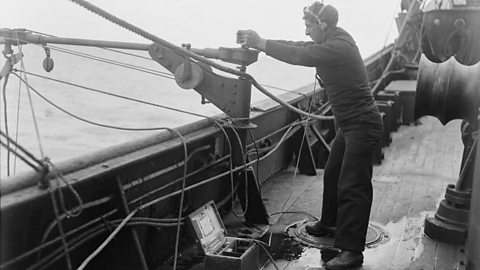
Image caption, New microphones were used to identify enemies and dangers
The hot-wire microphone helped troops to work out where shells had been fired from. The hydrophone was used to hear sounds under water and locate U-boats (submarines).
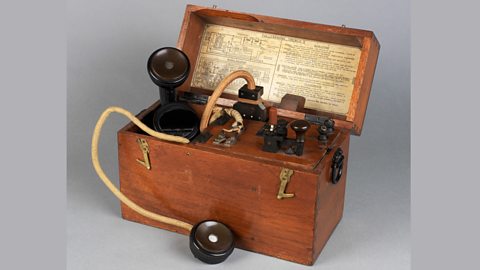
Image caption, Telephones picked up and sent Morse code between trenches
This allowed important messages to be delivered so soldiers across the front knew the plans for defence and attack. Wireless radio was also used, mainly at sea and by aircraft.
1 of 4
How did technology change the world?
World War One was a time of fast change. Creative minds and great engineers worked together to develop new technology.
Some of these inventions became essential to life in the 20th Century.
Personal cameras, telephones and radios are used by people even today.
Sadly a lot of the new technology was focused only towards making more powerful, deadlier weapons to fight the war.
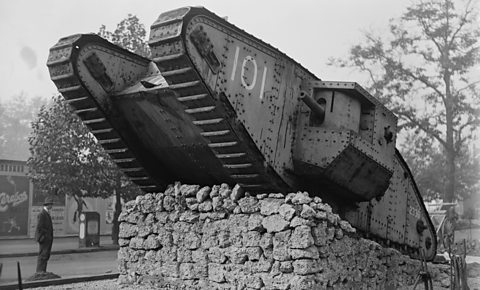
Activities
Activity 1: Explore these new inventions
The war was fought using a wide range of weapons, from personal guns like pistols and rifles, to larger weapons like machine guns.
Explore our interactive sketch book. Click on different weapons and items to find out more about them.
Activity 2: Explore message sending devices
Signallers used various tools to transmit messages.
Click on the labels in the picture below to find out more.
A special electric Lucas lamp was also used to send messages via Morse code.
But this was a problem. Anyone could see the light so the enemy could work out the message if they managed to crack the code.
Activity 3: Quiz – New weapons in World War One
Activity 4: History Explorer game
Play this game to test your knowledge and learn even more facts about World War One.
History Explorer: Secrets through time
History Explorer: Secrets through time: KS2 History
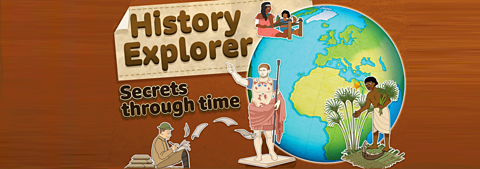
SAT’s preparation resources. activitySAT’s preparation resources
Get ready for the SATs papers with videos, activities, quizzes and games to refresh your knowledge and practise your skills.

More on WW1
Find out more by working through a topic
- count4 of 6
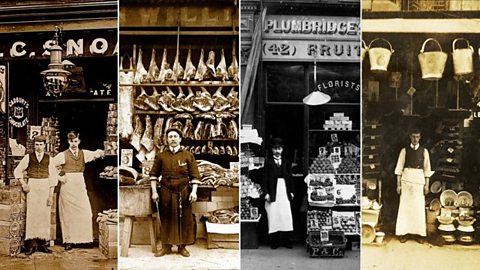
- count6 of 6
